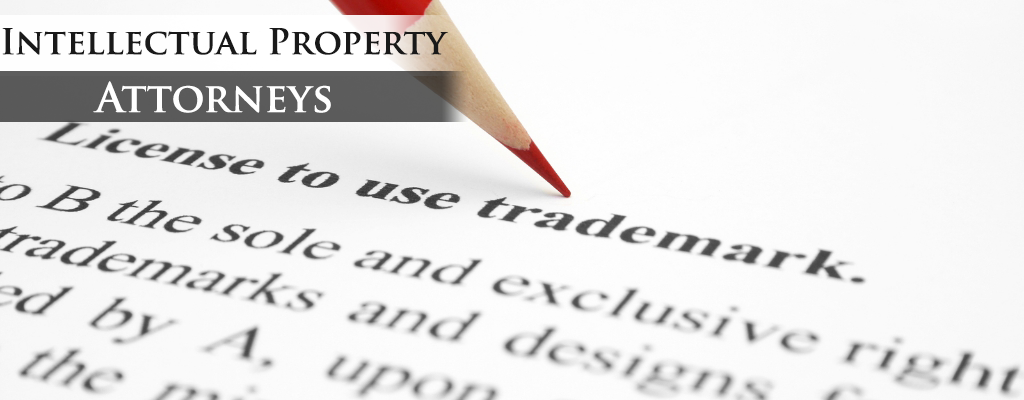
TRADEMARKS
Q1. What is a trademark?
A trademark is a distinctive name, symbol, or other device identifying a product, officially registered and legally restricted to the use of the owner or manufacturer.
Q2. What is the term of a trademark?
Infinite
Q3. What is an ITU (intent to use) application?
An ITU application is based on actual use of the mark in commerce to identify goods or services in the marketplace.
Q4. How long does it take to register a trademark?
It takes approximately 15 months. However, it may take longer if there is any question raised by the Trademark Office.
Q5. How much does it cost to register a trademark?
Here is the official USPTO 2011 Fee Schedule
Q6. What is the difference between the ® symbol, (SM) symbol and a ™ symbol?
® means “registered”, and can only be applied to a mark that has been registered with the USPTO. ™ is an abbreviation for trademark, and should be applied to any mark you use in commerce on goods. "(SM)"is an abbreviation for service mark, and should be applied to any mark you use in connection with services. You do not need to register your mark to use ™ or "(SM)".
PATENTS
Q1. What is a patent?
A patent is a grant made by the United States government on a new invention. It gives its creator the exclusive right to control the use, manufacture and sale of the invention.
Q2. What are different types of patents?
A utility patent protects functional aspects of an invention. Utility patents may be granted for any new, useful and non-obvious process, machine, manufactured article, composition of matter, or any new and useful improvements to any of these types of inventions.
An ITU application is based on actual use of the mark in commerce to identify goods or services in the marketplace.
A design patent is granted to protect the overall appearance of an invention and may be granted for any new and original ornamental design for a manufactured article.
Provisional utility patent is used to obtain “patent pending” status for a period up to a year while raising capital or testing markets.
An International Patent Application simplifies the process of filing international patents and is based on the Patent Cooperation Treaty (PCT) that has effect in up to 117 countries.
A plant patent is granted for the invention or discovery of the distinctive qualities of a plant or asexual reproduction of a new distinct plant.
Q3. What is the term of a patent?
The term of a utility patent is 20 years from the date on which the patent application was filed. The term for a design patent is 14 years from the date of issuance.
Q4. What steps are involved in the patent application process?
Step 1: Determine whether you need a patent
Step 2: Do a patent search
Step 3: Prepare for patent application
Step 4: Engage in patent prosecution
Step 5: Receive notice
Step 6: Patent maintenance
Q5. What is a claim?
Claims are most important in the patent application. They describe the scope of coverage that the inventor attempts to receive from the government. Sufficient patent coverage ensures that potential patent infringers will be prevented from making, using or selling your invention even if they make a slight modification.
Q6. What is a patent search?
A patent search is the process of finding any related prior art. It can either be done through the USPTO website or a manual search. A manual search is more thorough.
Q7. How long will it take to obtain a patent?
For a utility patent, the whole process usually takes 1-2 years. However, patents for some areas of technology may take up to several years. In addition, some applications that meet with more resistance from the Patent Office may require up to several years of arguments and continuations. Other types of patents usually take a shorter time.
Q8. How much will it cost?
Here is the official USPTO 2011 Fee Schedule
Q9. What is patent infringement?
The unauthorized making, using, selling of any patented inventions are considered patent infringement.
COPYRIGHT
Q1. What is a copyright?
Copyright is the legal right granted to an author, composer, playwright, publisher, or distributor to exclusive publication, production, sale, or distribution of a literary, musical, dramatic, or artistic work.
Q2. What is the term of a copyright?
A copyright typically lasts for life of the author plus 70 years. The copyright for certain works, including those created for an employer, lasts 120 years from creation or 95 years from publication, whichever occurs first.
Q3. How much does it cost to obtain copyright?
The official USPTO’s 2011 fee for copyright is $35.
Q4. How long does it take to obtain copyright?
It usually takes 12 months. It could take longer depending on issues that may arise.
